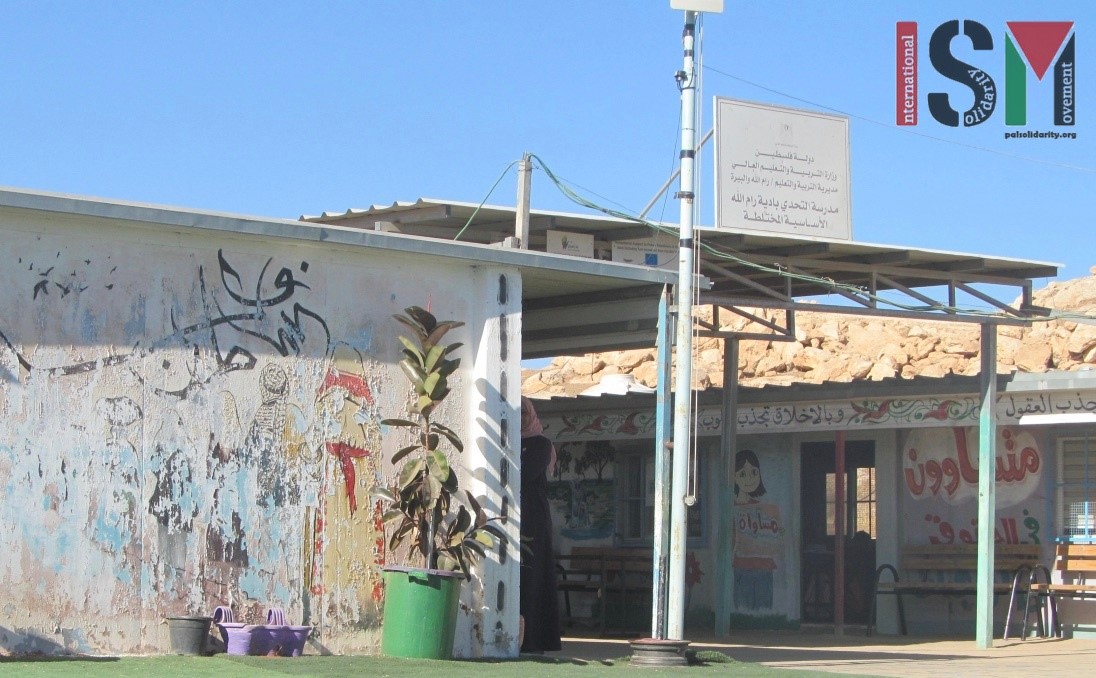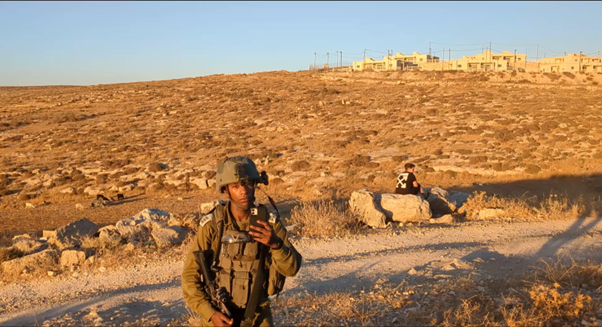-
Endless Israeli military campaigns in Tulkarem
By. Diana Khwaelid Tulkarm – 5-10-2023 A rapid military operation carried out by the Israeli occupation forces in Tulkarem camp at dawn today, around 5 a.m. Dozens of Israeli military vehicles stormed Tulkarem camp in the centre of the city, in the northern West Bank. Strong confrontations and clashes broke out between Palestinian militants who […]
-
Resisting the expulsions in Wadi Siq
Wadi Siq is a Bedouin community East of Ramallah, under threat of forced displacement. Some families have already been chased away. The combined pressure from the Occupation authorities and the fanatical settlers has been increasing dramatically in recent months. Four nearby communities – Ein Samiya, Al-Qabun, Ras al-Tin and a community close to Taybeh Junction […]
-
Watch: Israeli soldiers harass Palestinian teenager and try to intimidate internationalists in Masafer Yatta
On August 10th, three israeli soldiers harassed Abud Huraini, a palestinian teenager from the village At-Tuwani, in the region of Masafer Yatta in the South Hebron Hills, while he was brining out his flock of goats to graze. The three soldiers arrived by jeep from the illegal israeli settlement of Ma’on, which is located just […]
Action Alert An Nabi Saleh Apartheid Wall Arrests BDS Bethlehem Bil'in Cast Lead Demonstration Denial of Entry Ethnic Cleansing Farmers Gaza Global Actions Hebron House Demolition International law Israeli Army Jerusalem Live Ammunition Nablus Ni'lin Prisoner Ramallah Rubber-coated steel bullets Settlement Settlers Settler violence Tear-Gas Canister Video



